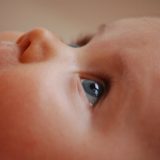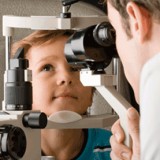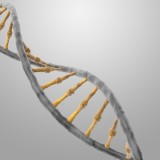Life After Retinoblastoma, Is It Really Over?
It gives exquisite joy to parents knowing that their child survived retinoblastoma treatment. The child’s normal eyesight is finally restored and the doctors have given a positive report, but like any recovery stage from a severe illness, the patient still needs to be closely monitored in order to boost the patient’s immune system and restore their normal healthy state. Here are some important reminders for parents with kids who survived eye cancer. Follow-through Doctors’ Appointments Although medication has stopped, it is very important for parents to show up every doctor’s appointment for the medical team to continue to monitor the patient. The recurrence of cancer and side-effects of the treatments need close monitoring. Likewise, parents need to inform the doctor of any noticeable changes they see from their child after the treatment to prevent any misconceptions. Keep Patient’s Medical Records Intact All medical reports before, during and after the treatment must be kept in one place. This is for easy reference as the child grows. As an adult, medical check-up cannot be avoided year after year. With records handy, it will be easier for them to trace patient’s medical background. Some important information to be kept are the following: Pathology report from biopsies and surgeries (if applicable) Copy of operative report if surgery was undertaken Discharge summaries from hospital admissions List of medication given during chemotherapy (if applicable) List of dosage and types given during radiation therapy (if applicable) Names and contact information of doctors who gave treatment Have Genetic Counseling Most doctors would recommend the family to have genetic counseling. This will give the family a sound medical advice and calculated risks for the eye cancer survivor to develop second cancer later on. The counselor on genetics will review the family’s medical history. This is to predict likelihood that genes causing pediatric retinoblastoma might be inherited and passed on to other family members. Undergo Genetic Testing The genetic counselor might also suggest genetic testing for other children in the family. The results of the genetic testing should also be kept together with all other medical records. Going through the battle against pediatric retinoblastoma is a long process for the family. Cancers are common among children and the negative effects are highly unpredictable; some cancers recur and can be deadly as the last time. You can secure your child’s health by taking better care of them through regular appointments with doctors and maintaining a healthy lifestyle for the whole...
read moreBreakthroughs in Retinoblastoma Research May Lead to Better Cancer Treatments
Pediatric retinoblastoma has been central to cancer research because it develops specifically in response to the loss or change of just one gene. When the single gene associated with retinoblastoma – RB1 – is not working as usual, cone cells in the retina can basically multiply without regulation. Now it’s been found that the oncogene MDM2 can also be instrumental in cell proliferation. This finding combined with other research pinpointing a specific protein (YM155) that prevented the death of cancer cells may be critical in improving retinoblastoma treatment outcomes. Further, these findings could have an impact on cancer treatment in general as doctors and researchers begin to further understand whether these genes and proteins have an impact on the growth and cell death of other types of cancers. MDM2 and Retinoblastoma Cells An oncogene is a gene that can assist with transforming a body cell into a cancer cell. It’s been found that MDM2 blocks a specific protein (p53) that will ordinarily cause excess cells generated during unregulated proliferation to die. MDM2 also regulates the protein MYCN that plays a role in promoting cell proliferation – not just in retinoblastoma, but in other child cancers as well. By learning more about how MDM2 works to regulate MYCN and what causes MDM2 to stop blocking p53, researchers may be able to develop medications and therapies that specifically target these proteins in effective ways. This could improve outcomes for retinoblastoma patients and potentially patients with other types of cancers, as well. Protein YM155 and Apoptosis Protein YM155 is another protein that has been found to prevent apoptosis, or cell death. This protein can be a hindrance when treating retinoblastoma, mitigating the effectiveness of chemotherapy and other types of therapies in actually killing the cancer cells. By utilizing therapies that inhibit YM155 when administering treatment for retinoblastoma, researchers have found that the therapies are more effective than when administered alone. By putting together the findings regarding these particular genes and proteins, researchers and doctors may be able to better understand how retinoblastoma cells survive in patients and ultimately how to better target the retinoblastoma cells with fewer side effects. Researchers may be able to develop medications and therapies that work faster and are more effective in eliminating the cancer and preventing secondary cancers. If therapies are developed that more effectively treat retinoblastoma, some of the same findings could be applied to treatments developed for other types of cancers, as well. These breakthroughs could potentially have benefits for many cancer patients of all ages and...
read moreThe Ins and Outs of Retinoblastoma Screening
Early detection is hands-down one of the most critical components of a positive retinoblastoma outcome. Unfortunately, a single, universal screening for retinoblastoma has not yet been developed. This may be due to the fact that pediatric retinoblastoma is a particularly rare type of childhood cancer. With no sure-fire test to identify retinoblastoma in children as of yet, there are a diverse number of options that play an important role in the detection and early treatment of the eye cancer. Signs and Symptoms At Home Many cases of pediatric retinoblastoma are caught in early stages due to vigilance on the part of parents. If any kind of abnormality in the eye is detected, a child should be brought in to see a doctor as soon as possible. One of the most common signs of retinoblastoma is the absence of the red pupillary reflex that occurs when light is shown into the eye. If the pupil appears white instead of red in pictures or when light catches a child’s eye, it could be a tumor causing the phenomenon. The red reflex occurs because of the blood vessels in the eye, so a white reflex could be caused by an obstruction. Eye Examinations and Check-Ups Regular eye examinations by a doctor are extremely instrumental in detecting retinoblastoma. All babies should be taken to well baby exams as recommended so that simple tests can be performed that may reveal retinoblastoma symptoms or other eye problems. Doctors will test the red reflex, but they will also check to see if the reflex is symmetrical, because an unsymmetrical pupillary reflex could be caused by a tumor that is not completely blocking the retina. Vision tests may help with detecting many kinds of eye problems, including retinoblastoma. Special Monitoring for At Risk Babies Babies who have a family history of retinoblastoma or who are known to have a mutation in certain chromosomes that have been linked to retinoblastoma should be carefully monitored for the disease. Instead of a regular pediatrician checking the eyes, an ophthalmologist should see the child beginning right after birth and continuing every 2-6 months for the first five years of the child’s life. Scan Tests for Retinoblastoma If one or more signs and symptoms show that a child might have retinoblastoma, scan tests are usually performed. MRIs and ultrasounds can show retinoblastoma tumors. If there is a chance that a retinoblastoma tumor has spread, bone scans can also be used to check for bone tumors. Genetic Counseling and Screening Genetic screening can help doctors to figure out if a child who is predisposed to the mutation that causes retinoblastoma actually has the mutation. If a child is found to have the heritable form of retinoblastoma, genetic counseling can help doctors to determine whether other family members need to be tested for the mutation. Follow-Up Visits It’s critical to ensure that children are consistently monitored throughout the course of their lives. Especially when retinoblastoma is diagnosed and treated, children must be carefully monitored for life for recurrent tumors in the eyes and new growths elsewhere in the body. Many children who have had retinoblastoma in one eye will develop retinoblastoma in the other eye within a few years. Environmental factors such as tobacco smoke may also greatly increase the odds of retinoblastoma patients developing other tumors later in...
read moreWhat You Need to Know About Clinical Trials
When it comes to complex and aggressive conditions like pediatric retinoblastoma, clinical trials are a fundamental pillar in knowledge, research, and evolution of treatment. They’re an opportunity to learn more about these conditions, as well as how we can come one step closer to curing those who suffer from them. Learn more about clinical trials and whether they may be right for your family. What Is a Clinical Trial? Clinical trials explore specific treatments, strategies, and devices for medical conditions to establish which options are safest and most effective. In some cases, they can also help to determine the best treatment options for people in certain groups, like a certain stage or subtype of a disease. Trials typically occur in the final stages of a long, careful research process. They follow strict scientific guidelines to help protect participating patients and ensure that the results are reliable. How Clinical Trials Work Participating patients may get treatments or tests in a clinic, hospital, or doctor’s office. They’re all based on a master plan for every medical center participating in the study, called a protocol. The protocol outlines what exactly the trial will accomplish and why. Clinical Trial Phases Trials that test medical devices and medicines will occur in phases, which help researchers to answer key questions along the way. For example, a phase I clinical trial will explore safety and side effects in small groups of participants. Phase II will look at the efficacy of the treatments and continue safety reviews. Once these treatments have the green light, phase III will involve larger groups of participants to continue efficacy research, possible side effects, and compare the treatment with others on the market. Benefits and Risks Before deciding on participating in a clinical trial, it’s critical to weigh out the benefits and risks. It’s important to understand that while the treatments and tests being researched have shown promise to get to the clinical trial stage, they can still be harmful or ineffective. Some of the benefits include: Having access to new, revolutionary treatments that aren’t yet available to the public Receiving expert medical care within a leading healthcare facility Helping others with similar conditions by contributing to the research needed to find a cure Clinical trial risks include: The possibility of unpleasant, serious, or potentially life-threatening treatment side effects Some individuals’ conditions may not respond to treatment as well as others The trial may involve extensive travel time to the facility, extended treatment duration, or hospital stays Your health insurance plan may not cover the full costs of the study Current Pediatric Retinoblastoma Trials St. Jude Children’s Research Hospital has information on pediatric retinoblastoma clinical trials. The iRET trial is for children 17 or younger who received a retinoblastoma diagnosis that came back or didn’t go away after their treatment. This study will examine the effects, impact, and potential cure rate of injecting carboplatin directly into the vitreous, of the gel that fills the majority of the eye. The SJRET6 trial is for newly-diagnosed patients whose retinoblastoma has not spread beyond the eye, and who have not received previous radiation therapy or chemotherapy. This Phase II study will examine the clinical outcome of giving chemotherapy directly to the child’s eye with the first two cycles, or six weeks, of treatment. If your family is interested in participating in a clinical trial, we urge you to contact St. Jude’s or another participating facility to learn more about the details, benefits and risks, and potential impact your child could make on the future of...
read moreHelping Families Using Pediatric Cancer Genetic Testing
The 21st century has brought revolutionary developments in the science and technology that save lives every day. Specialists are using DNA sequencing technology to learn about our genetics and how some people are more likely than others to develop cancer. More specifically, they’re observing the benefits of genetic testing in children who have already been diagnosed with pediatric cancer. About the Study In a study recently published in the New England Journal of Medicine, researchers examined 1,120 pediatric patients who received cancer treatment from various hospitals. The findings showed that roughly 8.5% of these patients exhibited genetic mutations in their ancestral DNA that caused a heightened risk of cancer, which could be passed to future generations. Furthermore, more than half of these patients with mutations did not have a family history of hereditary cancer. Unanticipated Results Researchers found some insights that they didn’t expect going into the study. Of the 1,120 patients examined, 95 had inherited genetic mutations in 21 various genes. This rate was significantly higher than they expected. Among the highest rates were in patients with pediatric retinoblastoma, neuroblastoma, bone tumors, and adrenal cortical tumors. Many patients had BRCA1 and BRCA2 mutations, which are associated with heightened risk for cervical and breast cancers, but have not been linked to pediatric cancers previously. Whether or not these mutations are related to pediatric cancers is still unknown. Benefitting Families, Not Just Patients From these findings, scientists and researchers are learning to evolve the way they approach cancer diagnosis. Historically, pediatric cancer patients are not referred to genetic specialists unless their family history or cancer fits specific criteria. However, research continues to suggest that medical professionals should rethink the status quo. It may be possible to look at the families of pediatric cancer patients to help determine if other family members are at risk too. The Future of Genetic Cancer Research There’s still much to learn about the connection between certain genetic mutations and their role in the development of cancer within a family and across generations. As information unfolds, medical professionals are balancing caution and ingenuity to change the way we identify and treat...
read moreNew Retinoblastoma Research May Change Cancer Diagnosis and Treatment
Retinoblastoma protein RB1 is a gene that has been linked to cancer since early research breakthroughs in the 1970s. Now there are new findings that show more details about RB1 and other RB proteins’ central role in controlling cell proliferation (increase) and cell death. Additionally, new findings review the effects of RB loss and protein modifications. While there is still much work to be done before these new findings can be effectively applied, they may change the way that retinoblastoma and other cancers are diagnosed and treated. History of RB1 in Tumor Research The protein retinoblastoma RB1 is named after the eye cancer retinoblastoma and was the first tumor suppressor gene to be identified. The initial findings in the 70s were instrumental in the hypothesis by Alfred K. Knudson that cancer occurs as a result of multiple mutations in specific genes. The protein has been used to help regulate cell cycles and stop cell proliferation, but there have been different issues with actually using the protein for these purposes. It may be possible to work through these issues with the new findings. Issues with RB1’s Role in Treatment RB1 belongs to a family of proteins that are related to cell proliferation. Some of these proteins share responsibilities in the functions related to cell generation and proliferation, overlapping and working together to complete functions. Unfortunately, this makes it somewhat difficult to single out one specific gene’s role in proliferation in order to use that knowledge for treatment or diagnosis of cancers. There is some hope that the new findings will help to further break down this relationship so that RB1 can be used to stop cancerous cells from regenerating. RB1 and Apoptosis RB1 can be used in apoptosis, perhaps with greater effectiveness now because of the new findings. Apoptosis is controlled cell death that is used in cancer research and treatment. The issue that has been found with apoptosis in the past is that cancer cells are better than ordinary cells at avoiding it. RB1 may be useful in getting cancer cells to die through apoptosis. While this has been suspected in the past, the new findings shed more light into how this may actually work in practice. More Work to Be Done While the findings have been enlightening for researchers and scientists that work in the oncology field, there is still much work that must be done before the findings will translate to real changes in the way that cancer is diagnosed and treated. Every breakthrough has the potential to improve the prognosis for cancer patients and bring us one step closer to a cure, however. By identifying the genes related to cancer and finding out more about the way they work, we may also be able to someday spot cancer markers and prevent the disease from ever gaining a...
read more





















